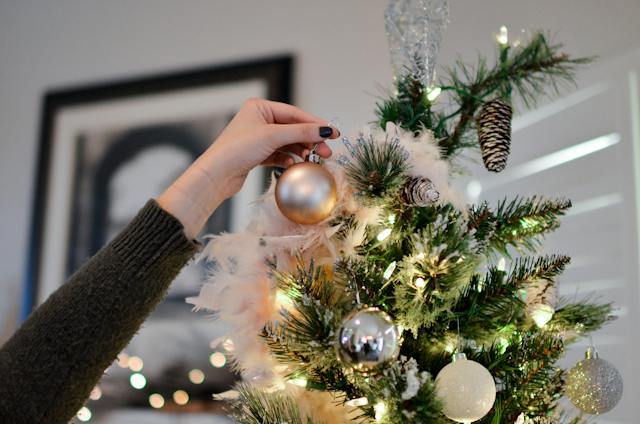
Christmas trees are an integral part of most Christmas celebrations; the family gathers together to listen to Christmas carols while they adorn the evergreen with garland, lights, and ornaments. Whether you cut down your own tree, buy one from a Christmas tree lot, use an artificial one, or simply decorate the one growing in your yard, you’re sure to enjoy the beauty this wondrous tree provides. But what do you really know about it? Keep reading to find out how the Christmas tree tradition started and what surprises could be hiding in that beloved tree.
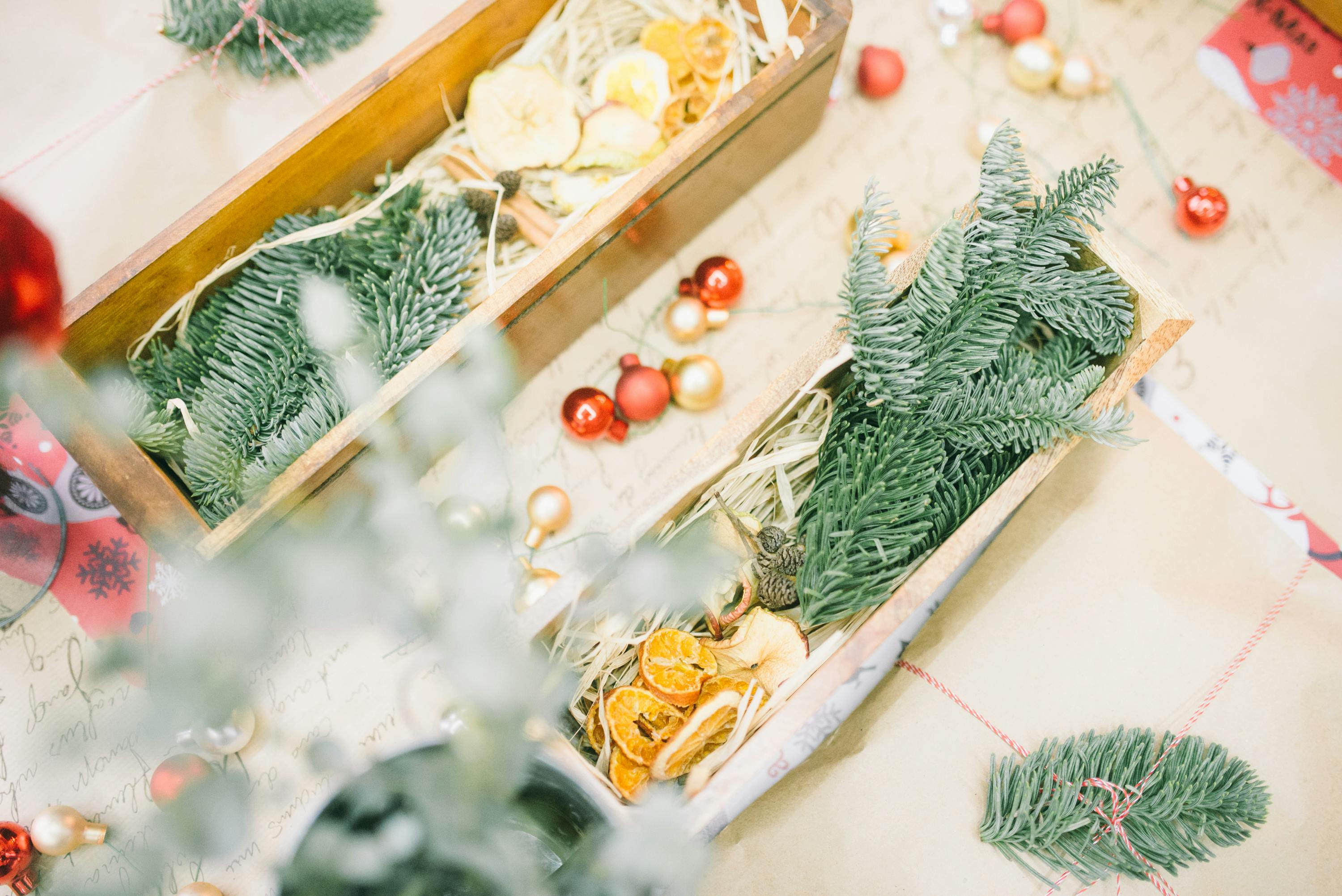
When Did the Christmas Tree Tradition Start?
Winter celebrations involving evergreens are much older than you think and in fact predate Christianity! In the Northern Hemisphere, these celebrations generally centered around the winter solstice (which falls on December 21 or 22 and marks the longest night of the year). Early Romans celebrated the solstice by decorating their homes and temples with evergreen boughs in honor of Saturn, the god of agriculture, as the solstice marked the midway point in winter and thus the nearing of spring. Evergreen boughs were also used by the Druids (the priests of the ancient Celts) as temple decorations and were representative of everlasting life. Though the Vikings didn’t use evergreen boughs, they did honor mistletoe for its role in the story of one of the most beloved Norse gods, Baldur. Even Christians in England in the 15th and 16th centuries used the evergreens holly and ivy as a common winter holiday decoration for churches and homes.
The Christmas tree tradition that we now so fully embrace and enjoy began in Germany, though the exact origins aren’t clear. Perhaps the earliest documented example of an evergreen tree being used in a Christmas celebration goes back to 1419 when a guild in Freiburg used a decorated tree to represent the tree of knowledge in their “Paradise Play” that was performed on Christmas Eve, according to TIME. By the 16th century, it’s recorded that Christians had decorated trees in their homes in Germany, and it’s believed that the famous Protestant reformer, Martin Luther, was the first to add lighted candles to an evergreen tree. The term Weihnachtsbaum (German for “Christmas tree”) was in use by the 17th century, the same time when the oldest known Christmas tree market existed in Strasbourg in Alsace.
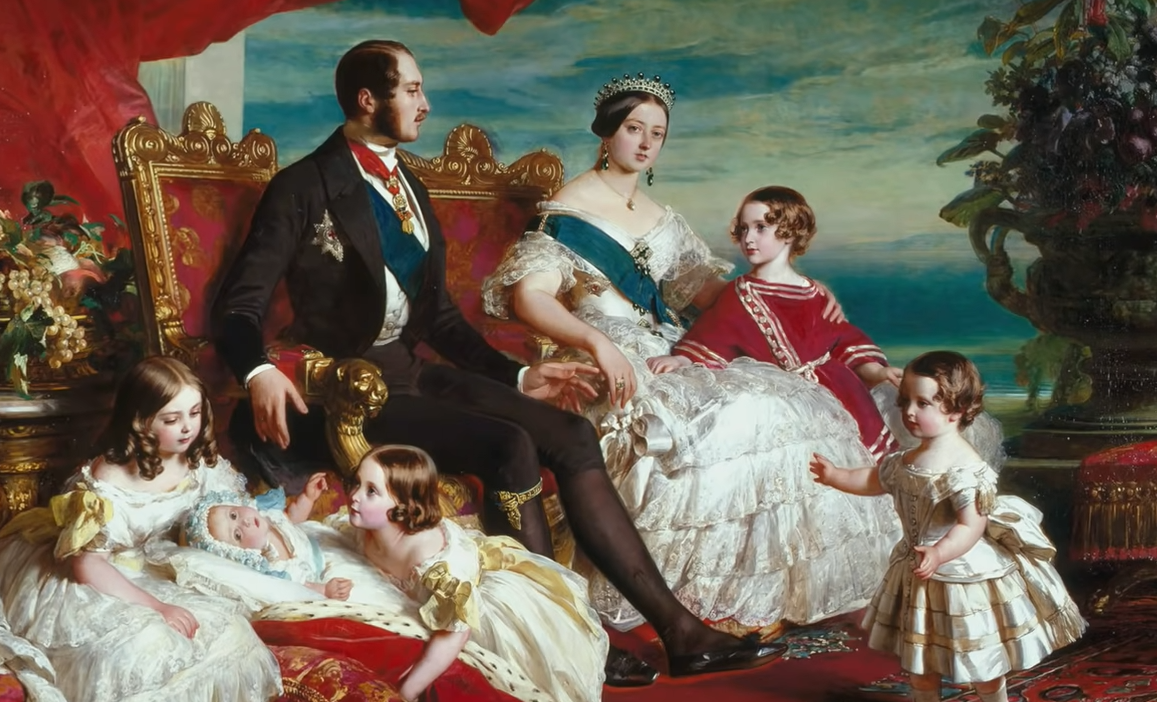
How Did Christmas Trees Become Popular in the U.S.?
It would be another 2 centuries, until the late 19th and early 20th century, before most Americans would embrace the Christmas tree tradition. Up until the 1840s, most Americans (other than German immigrants) still viewed Christmas trees as pagan symbols, a clear vestige of America’s early Puritan beliefs. These Puritan beliefs also led Massachusetts in 1659 to outlaw any observance of December 25th in order to maintain strict order and keep the day free from any potential pagan influence. But as German and Irish immigrants flowed into the U.S., the sternness of the Puritan legacy began to fade, allowing a pivotal moment to happen in the mid-1800s. In 1848 an illustration of Queen Victoria, Prince Albert, and their children celebrating around a Christmas tree was published in the Illustrated London News; since this royal family was very popular, what they did became immediately fashionable both in Britain and in East Coast American Society. Less than 50 years later, Christmas ornaments were being imported from Germany and the Christmas tree tradition was spreading across the United States. About another 40 years later, in 1931, Rockefeller Center hosted its first Christmas tree.
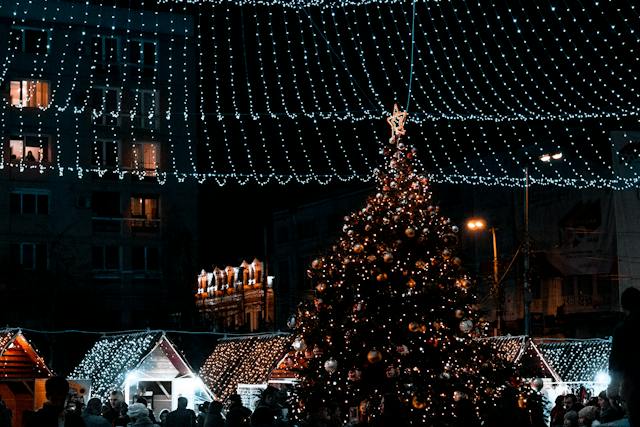
Can Christmas Trees Have Bugs on Them?
Whether you’re talking about the real Christmas tree that you are planning on putting on display inside your home or about the evergreen tree that adorns your yard, the same answer applies: yes. Though you are much more likely to contend with a pest problem on the living tree than on the cut one, it’s definitely possible to bring a bevy of pests into your house along with that beautiful Christmas tree. Keep reading for the types of pests you are likely to encounter.
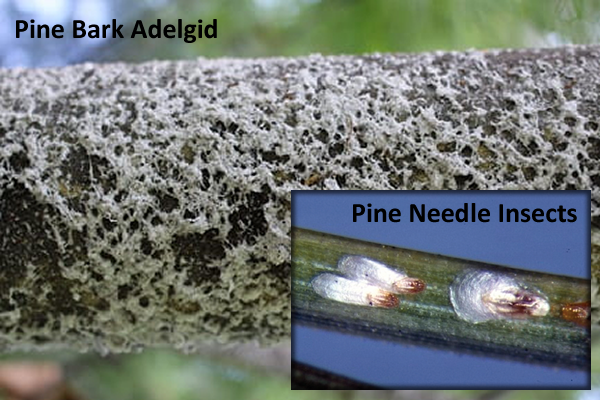
What Bugs Are Found on Christmas Trees?
Adelgids – If your tree looks like it has white “flocking” on its needles, twigs, or bark, you may have an issue with adelgids. These insects are tiny, sedentary, and secrete white cottony wax filaments around their bodies. Though they might not look much like the insects we are most familiar with, they pack a punch and can easily kill a tree.
Aphids – For an overview of aphids, see our article here. Generally, these tiny insects are host-specific and will only feed on the type of tree you bought for Christmas, so won’t likely spread to other trees or houseplants. Interestingly, the giant conifer aphid can get up to 1/8” long and is one of the largest aphids in North America. Despite being tiny, they can cause real damage to leaves, shoots, and buds.
Bagworms – These insects are most recognizable for the tough silken case they build to live in; this case (or bag) can be up to 2 inches long and 1/2 inch wide and is strengthened with intermixed leaves, twigs, and bark. The mature bagworm caterpillars can be up to 1 inch long and will emerge as an adult that either looks like a black moth (male) or like a yellowish-white maggot (female). They are also voracious eaters of leaves and can completely strip the foliage off a tree if not treated.
Bark Beetles – The larval stage of these insects will bore into a stressed tree, creating a fine sawdust and leaving behind small holes; they will then feed on the tree, potentially killing it in the process. Adult bark beetles are small and cylindrical in shape and will eventually emerge from the tree, though they will still feast on it. Fortunately, they are not a threat to the furniture or structural wood in your home.
Bark Lice (psocids) – Unlike the similarly named bark beetles, bark lice do not actually feed on the tree itself, instead they feed on the materials that accumulate on the tree’s bark and leaves, such as pollen, mold, fungus, and even dead insects. They are small, soft-bodied insects that generally have wings and are either gray or brown.
Mites – There are a variety of mites that can inhabit an evergreen tree or any nests that are built in that tree. Mites are generally tiny and light-colored and are difficult to detect. On an indoor tree, they don’t pose much risk, but on living trees, they have the potential to do a lot of damage.
Praying Mantises – Though praying is likely part of your Christmas celebration, you probably weren’t looking to include this pest in the tradition. You almost certainly have an image of the adult praying mantis in your head, but did you know that they produce brown, frothy-looking egg masses that they attach to plants and trees? When these egg masses hatch, dozens of baby mantises will emerge! Fortunately, these pests are not dangerous to the tree itself, so if you see one of these masses on a tree in your yard you don’t have to fret. However, if you don’t want a deluge of mantises in your home, be sure to remove the egg masses before you bring your Christmas tree indoors.
Scale Insects – Much like adelgids, scale insects are sedentary and generally have a waxy covering. The exception to this is the youngest stage of scale insects, which are called crawlers; aptly named because they do exactly that. They are extremely small, but when found in large numbers, they can be quite distressing to behold. Even more distressing, however, is the damage scale insects can do to living trees, including stunting growth, discoloration, defoliation, and dead branches.
Spiders – Generally speaking, the spiders found on Christmas trees are harmless and are not well-adapted to living indoors. However, if you see a spider that you think could be harmful (brown recluse, black widow, etc.) or if you have an abundance of spiders in your home, call The Bug Dude as soon as possible.
Are Christmas Tree Bugs Harmful?
The spiders and insects found on Christmas trees that have been cut down and placed inside your home for the holiday are generally harmless, though they are definitely an unwelcome addition to your Christmas festivities! The biggest problem these bugs pose is that they take a beautiful part of your Christmas celebration and can make it frustrating, scary, or just plain gross. There is one exception, however, that can affect pets (if you have a bird as a pet) and bite humans, causing severe itching: bird mites. These pests cannot survive on a human host so are unlikely to cause a long-term infestation, and they are not known to transmit any diseases to people, but they would make for a very unhappy Christmas surprise.
The damage that evergreen tree pests can inflict on living trees in your yard can range widely. This damage could simply be an aesthetic blight, a deformation, stunted growth, or even worse, it could kill the tree. That’s why if you think you have a pest problem on your living Christmas tree, you need to call The Bug Dude at 817-354-5350 as quickly as possible to make sure you get to enjoy that beautiful tree for years to come.
Can You Prevent Christmas Tree Bugs?
There are a few tricks to keeping bugs from hitching a ride into your home this holiday via your real Christmas tree:
- Before you buy the tree or cut it down yourself, make sure to inspect it with a bright flashlight; keep a lookout for any signs of the pests listed above and if you see those signs, move on to another tree.
- If the tree you want has a bird nest in it, remove the nest before you pack it up to go home with you.
- If you notice any praying mantis egg sacks and decide you want that tree anyway, simply remove the egg sacks and leave them outdoors.
- Utilize the mechanical tree shaker at the tree lot where you buy your tree or manually give it a good shake if you cut down your own tree before you prep it for transport home.
- When you get to your house, inspect the tree again for any signs of pests or any bird nests you may have missed, and remove them if possible. If you discover the tree is full of bugs, consider going back to the tree lot and exchanging it.
- Shake the tree one more time before you bring it inside.
- If you cut down the tree yourself, consider sprinkling some food-grade diatomaceous earth on it and leaving it on your porch or in your garage for about 48 hours before you bring it inside. This is a natural way to help eliminate potential pests. Be sure to shake the residue off the tree before you bring it inside.
- Do not spray your indoor tree with pesticides as some can cause flammability risks.
For outdoor, living, evergreen trees, call The Bug Dude at 817-354-5350 to talk to an expert about your preventative treatment options.
What to do if Your Christmas Tree Has Bugs?
If you notice a few bugs emerging from your indoor Christmas tree, don’t overly stress. The majority of these pests are not suited to living inside your home and will quickly perish. For these few pests, simply vacuum them up as you see them. However, if you notice an infestation of pests or if they persist for more than a few days, call The Bug Dude at 817-354-5350 to get an expert technician out to identify the pest and get it treated before it can ruin your magical Christmastime.
Now, if you notice signs of any of the above pests on your outdoor, living, evergreen trees, make sure you call The Bug Dude immediately so you don’t risk the issue spreading and destroying that beautiful symbol of Christmas you cherish in your yard.
Christmas is a time to surprise your loved ones with gifts that show them how much they are loved and thought of. And while those surprises are part of the joy of the season, not all surprises are welcome. So if any pests try to crash your Christmas festivities, give The Bug Dude a call at 817-354-5350 and let us help get you back to a time of merriment, joy, and peace.
Further Reading:
“History of Christmas Trees” – History.com Editors, HISTORY
“How Christmas Trees Became a Holiday Tradition” – Olivia B. Waxman, TIME
“Insects on Real Christmas Trees” – Michael J. Skvarla, Assistant Research Professor of Arthropod Identification, PennState Extension
“Christmas tree pests: Woman opens up about surprise encounter” – GMA Team, Good Morning America
“Bagworms” – Bastiaan M. Drees, Professor and Extension Entomologist, The Texas A&M System, Texas A&M AgriLife Extension
“‘Tis the Season…For Dormant Oil” – Alissa Breach, The Bug Dude Blog
Author Bio: Alissa Breach has been gaining knowledge and experience around pest control concerns over the last 14 years while working for Mid-Cities Pest Control. She has a creative writing BA from UW-Madison and is always pursuing new and interesting writing projects.




